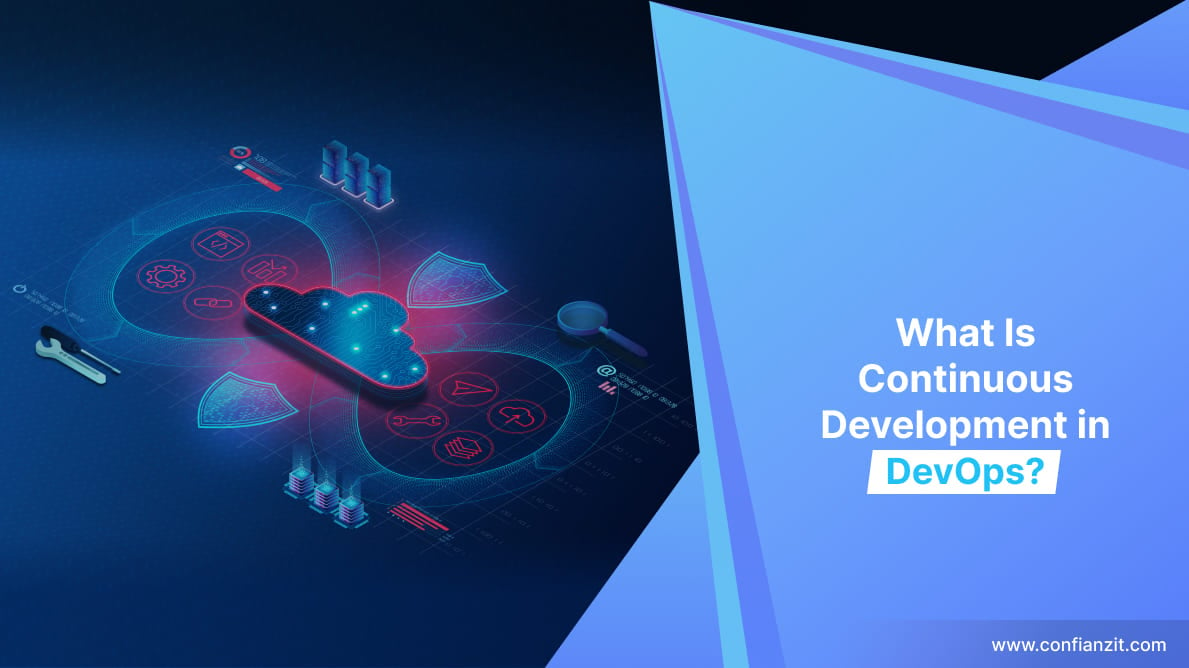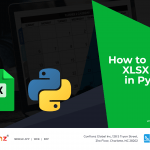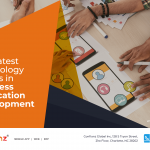DevOps is a collection of practices and ideals defining the contemporary software development landscape. It was created to increase the collaboration between those who make software and those who deploy and maintain it: software development teams and IT.
While DevOps combines many different methodologies, one of the pillars is Continuous Development (also known as continuous software development of CSD). It’s intended to streamline the process of software deployment.
Continuous Development is the status quo at major software companies like Google, Amazon, Etsy, and Adobe. But it’s not just helpful for giant corporations; smaller software development companies can also adopt these practices to improve software release. Read on to learn the basics of continuous development, its benefits, and how to overcome the challenges.

The Basics of Continuous Development in DevOps
Continuous development contains several phases that happen without an end. The lifecycle is often depicted as an infinite sign, but that’s a little misleading since different stages often coincide. Its purpose is to continually track planning, testing, and feedback to deliver incremental improvements that fulfill customers’ needs.
Continuous development is an umbrella term for the DevOps practices of continuous integration, testing, delivery, and deployment of software.
In the past, the process was far more linear. When following practices like the Waterfall Methodology, software was developed and then released widely yearly. Customers would then use the software and give feedback; then, the developers would integrate that feedback into the next version of the software. This meant it sometimes took years for customer feedback to make it into a finished product.
That is no longer the case and is widely seen as an outdated practice. By following continuous development practices, teams can constantly release new versions with minor tweaks, bug fixes, and other changes throughout the product’s lifecycle.
Continuous integration
Continuous integration involves merging code changes that several developers have done into a single repository. This ensures none of the code conflicts and cuts down on repeated code and bugs. By continually integrating code, developers can better understand how smaller pieces of code affect the whole and can add or remove based on more immediate feedback.
Continuous delivery
With continuous delivery, the whole process of releasing new code is automated. This means that code changes are automatically deployed to a testing/production environment instead of manually bringing a change down the production pipeline, with the developer only needing to green-light the actual release.
Continuous deployment
Continuous deployment is very similar to continuous delivery but with an even higher degree of automation. In this practice, every code change that doesn’t fail tests is automatically deployed, removing any batch releases or updates.
Continuous testing
Continuous testing is when automated testing protocols are in place so that any code change is automatically tested. It can help you catch any bugs as soon as possible. And the automation lets your developers focus on fixing any issues and creating new code rather than running the tests manually.
The Benefits of Implementing Continuous Development in DevOps
So if you’re in software, why should you use continuous development over other traditional methods or DevOps practices? Continuous development sets itself apart from other development practices in a few ways.
Time-to-market
This is probably the most critical benefit of continuous development. There aren’t really other methodologies that deliver a faster turn-around time for software updates.
Time-to-market is critical in software development. Technology moves fast, and if you want to stay competitive, you need to make sure you’re keeping up with your competition. Continual development means your software will always be on the cutting edge.
Customer satisfaction
Put yourself in the customer’s position for a moment and choose which you’d prefer.
- You download an update for a program you use regularly that promises to have all the new features you’ve been wanting. Unfortunately, there is a bug that renders a key feature practically useless to you. You file a bug report and have to decide whether to wait a year until they release the next version or roll the software back to the last usable version. Eventually, you download the newest version, and the bug is gone.
Or…
- You open the software you use regularly. There is a notification that new features have been added. You’re excited, but a bug makes one part unusable. You send the developers a message, and the next time you open the program, the bug has disappeared.
Obviously, option 2 is the superior choice. Even if the result is the same, the fast turn-around will make your customer feel more valued and will get them to a usable version faster.
Bug detection
With the fast turn-around and continual customer feedback, you’ll also benefit from improved bug detection. When you’re implementing a bunch of changes all at once, launch day can leave you with a lot of bug reports with little indication of where the problems lie.
If you make more minor changes, however, the source of a bug will be more obvious, and it’s a less intrusive change to roll the software back when it’s not an entirely new version.
Efficiency
On top of all these other benefits, using automation will significantly speed up development. Instead of having to walk through each step of the process manually, automation in deployment and testing will free up your developers so they can focus on more critical tasks.
Continuous Development Can Bring Your Business Up to Speed
Finding the best way to produce and disseminate software efficiently is the holy grail for many businesses. It can give you a critical edge and leg up on your competition, as well as increase your customer satisfaction in a big way. Continuous development is a massive step in the right direction. The focus on consistent, minor updates can hugely improve your bottom line.
If you’re serious about bringing your software development company to the next level, Confianz can help. Our team of experts can help you revolutionize your business.
We partner with businesses to help them reach their potential. Confianz Global is a well-established company in Charlotte, NC that specializes in software development and is a prominent provider of comprehensive IT services. Our team specializes in developing custom mobile applications for both iOS and Android platforms. Additionally, we offer web development services and assist with implementing Odoo ERP solutions.
So schedule a call and get started today.







